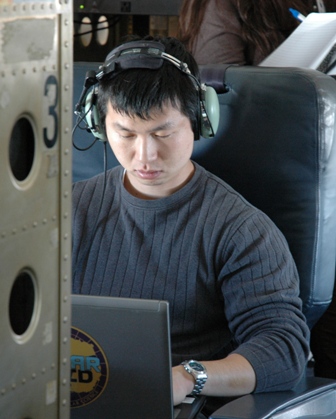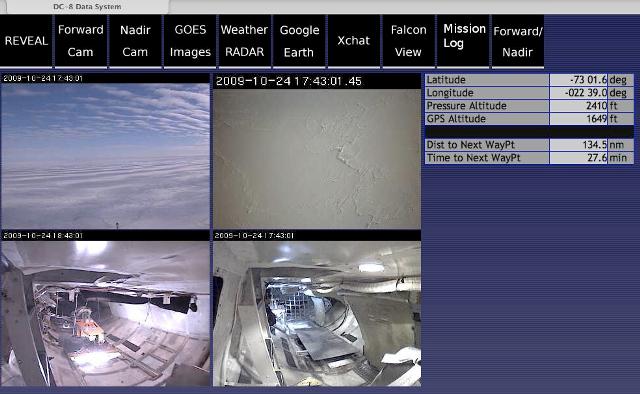From: Jill Hummels, Public Information Officer, University of Kansas School of Engineering
 PUNTA ARENAS, Chile, Oct. 21 — Every flight in NASA’s Operation Ice Bridge mission begins and ends with a briefing. Today’s pilot Dick Ewers calls the disparate group to order and starts the morning with a roll call of the flight manifest. Every person on the flight must be accounted for with either a self-announced “Here!” or another passenger providing an accounting of their whereabouts as “on the plane.” Today’s total: 31.
PUNTA ARENAS, Chile, Oct. 21 — Every flight in NASA’s Operation Ice Bridge mission begins and ends with a briefing. Today’s pilot Dick Ewers calls the disparate group to order and starts the morning with a roll call of the flight manifest. Every person on the flight must be accounted for with either a self-announced “Here!” or another passenger providing an accounting of their whereabouts as “on the plane.” Today’s total: 31.
The project scientist Seelye Martin then gives an overview of the day’s science objective, which instruments will be onboard that day, and which will play the lead role.
The flight crew provides a brief review of issues that need monitoring by all passengers and crew. At the top of the list: making sure lavatory faucets aren’t left running and ensuring everyone knows that “equipment and hot food have priority in the aisles.” The navigator announces some of the parameters for the day’s flight, such as altitude and duration. Other crew members reiterate safety awareness and the day’s schedule. “On the plane by 9. Doors close at 9:30. In the air by 10.”
Before taking off, all people on board must be on communication headsets. “Mission” (the flight crew) performs an audible check of all research instrument teams on board, and a representative from each team provides a status update.
Once airborne, researchers can choose to take off the headsets, but they are the best tool for communicating changing needs, problems, wishes, hopes and dreams with flight crew and the mission’s project science. Discussions, though not constant, are frequent.
About an hour into the flight, Mission announces impending pitch and roll maneuvers needed to calibrate some of the instruments.
Throughout the flight, everyone is free to move about the cabin, mingle, take pictures and talk shop.
Several instrument stations are outfitted with touch-screen monitors that provide real-time data, including satellite weather images, “webcams” of what’s directly in front of the plane and below it (below), and a Google Earth application that maps the current location of the DC-8.

Near the end of today’s roundtrip flight, the headsets are back on and everyone is back in their seats. Mission calls out each research team for a quick review of the day’s highlights, and any special landing procedures needed for data acquisition or instrument calibration.
On the ground, researchers quickly gather their personal belongings and any necessary portable equipment and haul it to the cramped mission offices at the airport. Within a half hour of the plane’s doors swinging open, all flight crew and researchers gather for a post-flight briefing on the day’s mission.
The day ends with a quick review of the next flight mission and schedule: “Briefing at 7. Power on at 7:30. Doors open by 8. Doors close by 8:30. In the air by 9.”
